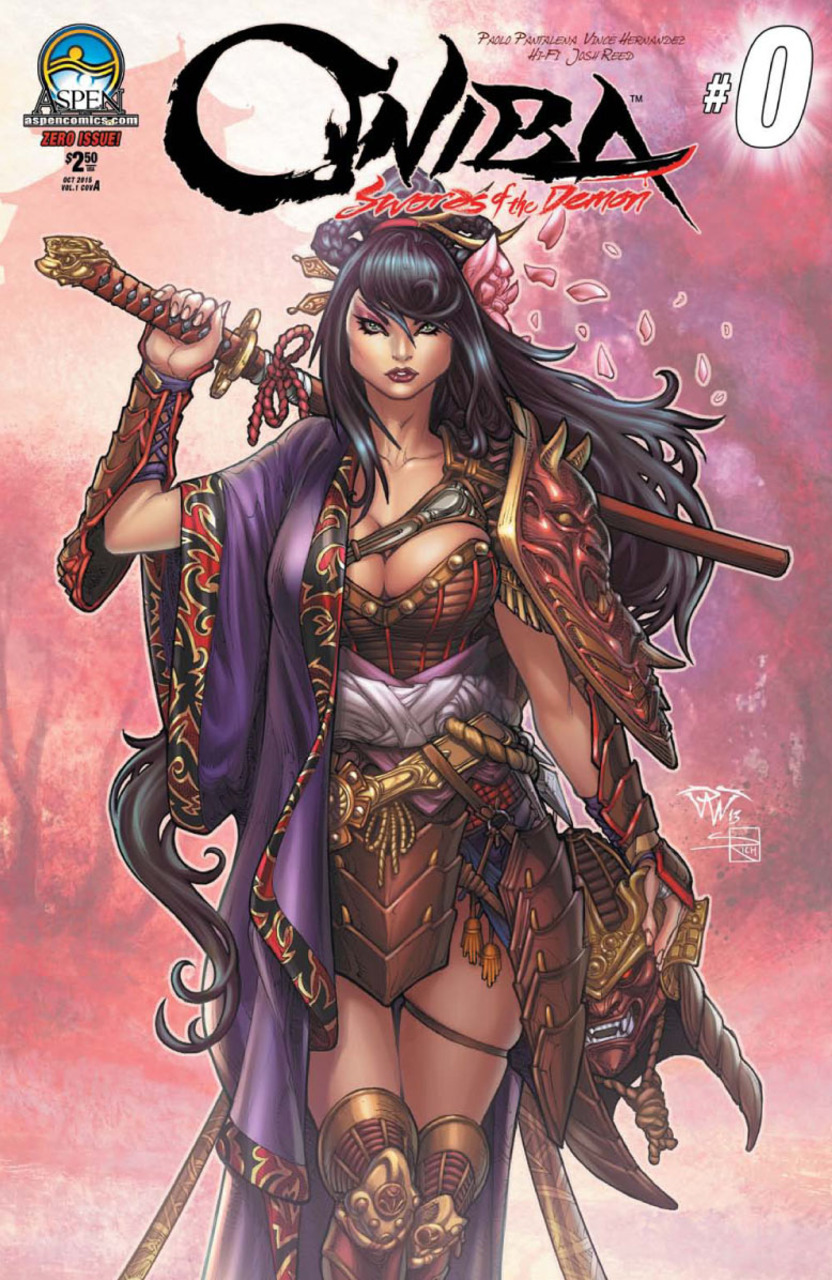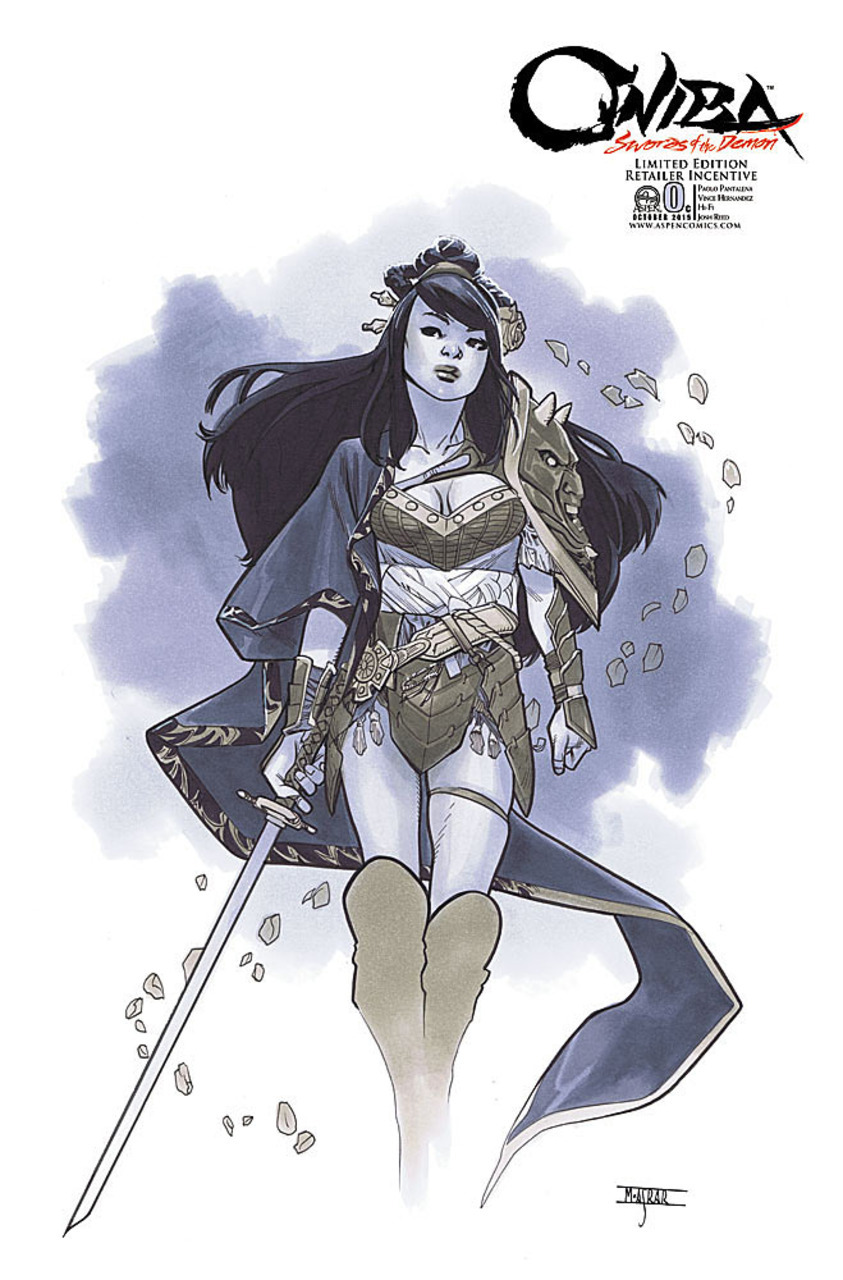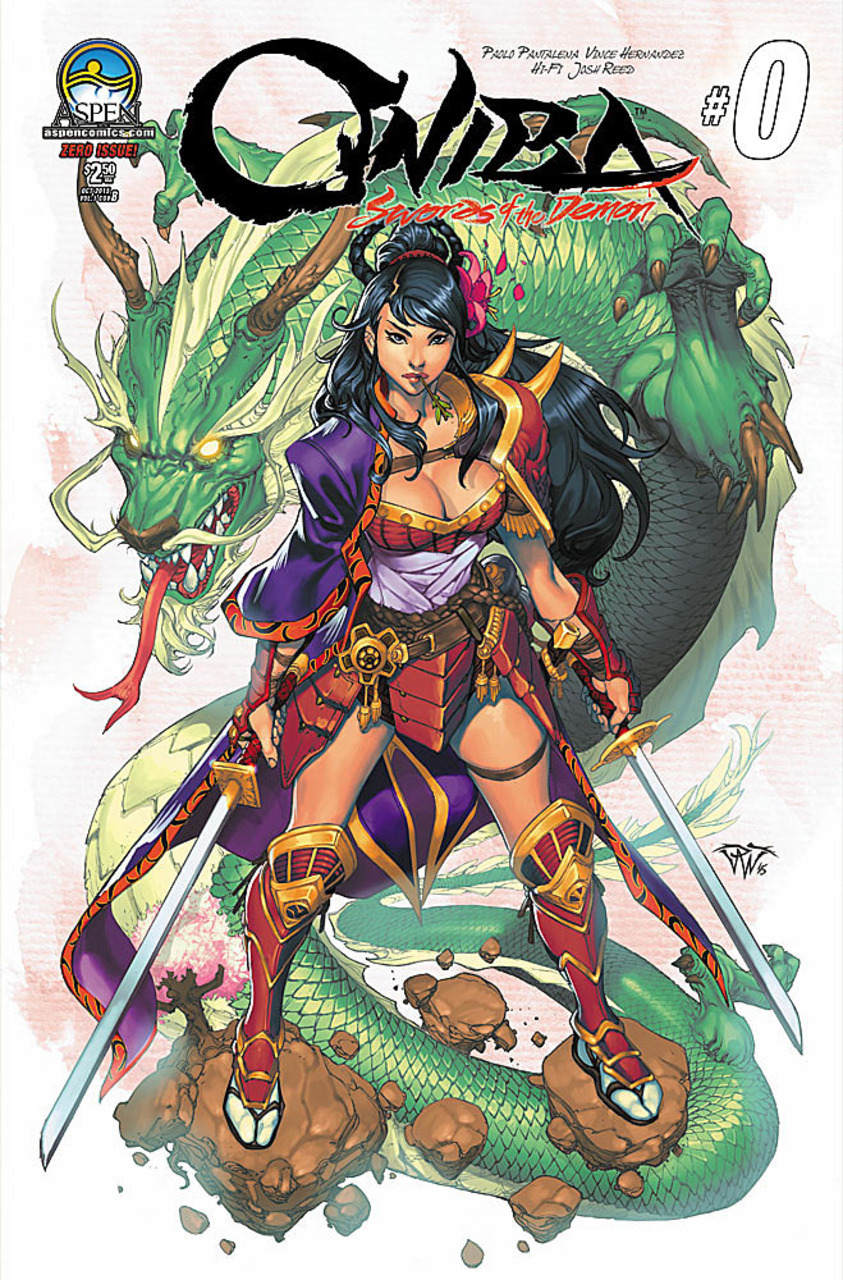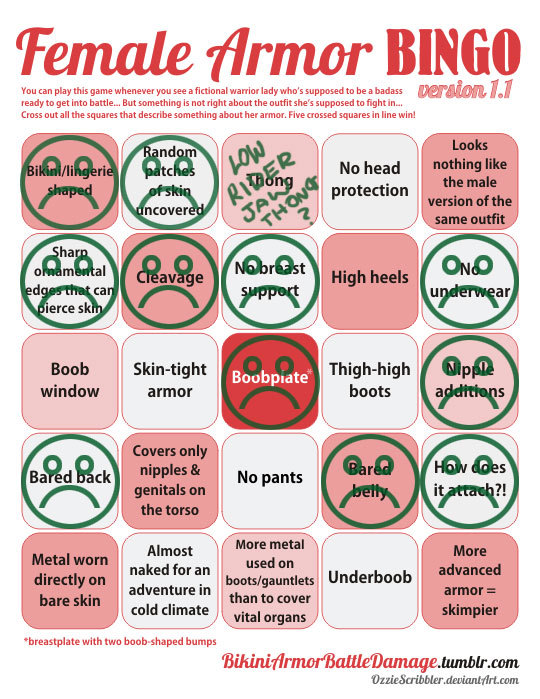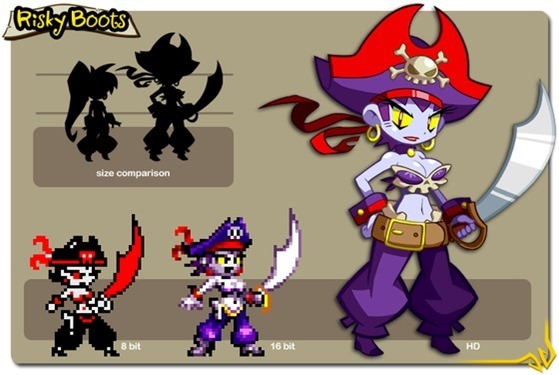Okay… wow at your friend’s assumptions… this is going to take a while.
Firstly and foremost, there is a reason why Ozzie put “She was designed in a country where sexualization is cultural!” prominently on the Female Armor Rhetoric Bingo card. Actually there are two good reasons:
- Local cultural differences don’t excuse how you treat roughly half the population of the world. Objectifying people is not about sexual expression within your culture, it’s about reducing them down to something less than human.
- The vast majority of people who make this claim don’t know anything at all about the region they’re referring to and are just outright spreading ignorance.
So, with that second point particularly in mind… let’s move on to:
“in Asia…”
Any time you hear someone try to use the justification of cultural differences with “Asia”, you should remind them (violently if necessary) that Asia is not:
- A culture
- A country
- A hivemind
- A magical wonderland where the rules of reality are suspended and hence things happen with no explanation
Asia is a collection of countries which all have their own cultures and values. Those cultures are always evolving and the values vary from individual to individual (the individuals also grow – they are people after all).
Often, when people talk about “Asia” (or Asian video games) they mean Japan and/or South Korea. To claim that women in these areas don’t play video games is completely absurd. I mean lets look at some photos of gaming Internet Cafes in South Korea… notice something?
(x)
Japan actually has a whole genre of games which are heavily targets at women, Otome. It is a thriving genre, the same company that makes action games like Dynasty Warriors also makes otome games (along with like fifteen other major companies). It’s also the home of Nintendo – the company that produces gender progressive games like Pokemon. Japan is also the home of Square Enix, the creators of the famous Final Fantasy – a game with a massive female fan base if ever there was one.
After we received this ask, I messaged a female friend in the South East Asia region over Steam and asked if she thought there was any truth to your male friend’s idea. Her response:
“only men play video games in asia???
doood
plenty of females play video games in asia. at least half of my friends do. and they’re not just homely wallflowers either”(After this we discussed what a seriously hot and awesome cousin-in-law my friend has. It’s not really relevant to games, but her cousin-in-law is awesome… and hot.)
This is not to say that any of these nations are some sort of post-sexism gaming wonderland. Rather that it’s fairly safe to say that the blanket notion of women in Asia don’t play games is just absolutely ridiculous. So on to…
“Most of these are from Oriental games”
Some of the games with terrifying female armor are made primarily in Asia. Some of them are made primarily in the western world. Many of them are made collaboratively and ALL of them are made for the global marketplace.
There are numerous games made in one region with the story based on culture or region of another, stories of how games had to be modified for different markets, etc. Game companies have been marketing to the world at large for a long, long time.
Due to the increases in customer expectations and the need for broader markets, many MMOs now involve partnered companies from multiple regions. AAA games developers now frequently outsource large parts of projects to studios around the world.
To further confuse things: The Japanese company Square Enix owns several games studios based in and found in Europe.
The line between “Asian” or “western” games on in the marketplace has been really blurry for a long time.
“sexy women sells because mostly men are buying”
If there is one thing I’m sure of, it’s that sex doesn’t sell (unless you’re selling sex).
There’s seriously no history, precedents or market research to suggest trying to sex up your game has ever helped sales. It’s just something people do because they want to believe there’s an easy way to get sales.
Bayonetta marketed heavily on sex appeal in order to try to expand from the audience of those who liked the Devil May Cry franchise and ultimately sold less copies.
Duke Nukem Forever heavily marketed it’s own crass version of sex sells… it didn’t impress anyone or help save it from being a dire warning on how not to make video games.
The Dead or Alive franchise invested in the “sex sells” approach with not one, but three “extreme beach volleyball” games. After all that pandering, the franchise still has no advantage over it’s competitors and struggles to meet it’s (relatively modest) sales goals.
None of these games sales figures can compare in the slightest to Minecraft’s selling over 49 million copies or Call of Duty 2: Modern Warfare selling over 28.5 million.
Even the undeniably vulgar Grand Theft Auto 5, which sold over 32 million copies, didn’t rely on sex to sell it’s product. Instead the vast majority of the marketing was focused on the three main protagonists and the franchise it belonged to.
All of which is to say that if it were just cultural differences, these games wouldn’t become mainstream titles in the English speaking world. They’re mainstream titles because lots of people in the western world buy them.
– wincenworks
edit: important note!
satyabear said:
Fabulous post. Also worth mentioning that the term “oriental” is colonialist, racist, and highly offensive.
Time to bring this back as we’re getting people trying to assure us that things are magically different in Asia and to expand upon the post to address a couple of other myths people have raised to try to protect the core myth.
Myth – Japan (for example) doesn’t have or want any kind of Feminism
Japan totally it’s own feminist movement with a variety of key figures who have a variety of experiences and opinions on the best way to promote feminism in Japan. Writers, sociologists, film makers, all kinds of women in Japan are interested in helping establish real equality for women.
Just because you haven’t heard about them or someone tells you they’re not a thing, doesn’t mean it’s so. Feminism and other activist groups are frequently misrepresented and misunderstood in their homeland regardless of the background.
This all applies to South Korea and China and every other country in Asia and the rest of the world. It turns out women are people and want to be treated as people.
Myth – Western SJWs cruelly force collonialist censorship on innocent Asian companies
Every company in every country in the world has it’s own complicated combinations of opinions and conventions regarding… everything. Sometimes products move across the world virtually unchanged and sometimes they get altered before being released anywhere for any number of reasons.
An example of the changes going in reverse was that the Japanese version of God of War III has one major difference – Aphrodite’s boobs are covered up by a last-minute bra-thing addition rather than bare and on display. (NSFW). Why? You’d have to ask the Japanese localization team.
What does and doesn’t make it into a game or a localization is a complex process involving any regulatory bodies, the publishers, the developers and influenced by any trends or concerns at the time regardless of which nations are involved. Sometimes games stop getting localizations purely because the company isn’t well set up to do it anymore.
Of course, the main motivation behind creating these myths isn’t actually concern for the creators in this nation – it’s just trying to ensure an ongoing supply of fap material with the easy scapegoat (the very same nation they’re pretending to protect).
– wincenworks








